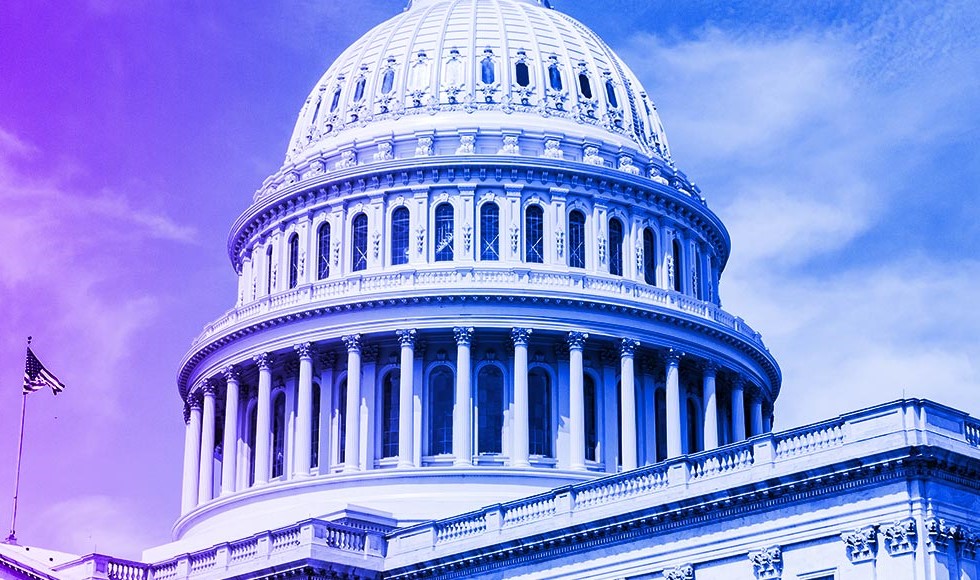Incentive-based Compensation: Interagency Proposed Rule
Seeks to curb “excessive risk-taking” and align compensation with sound risk management

KPMG Insights:
- 14 Years in the Making: Interagency proposal aims to curb “excessive risk-taking" at certain financial institutions with assets of $1 billion or more by regulating incentive-based compensation, as mandated in the 2010 Dodd-Frank Act.
- Balancing Compensation with Risk: Would introduce requirements for risk-adjusted awards, mandatory deferrals, and forfeiture and clawback provisions.
- Feedback and Comments: Expect sharp feedback across divergent voices during the comment period.
_______________________________________________________________________________________________________________________________________
April 2024 Six federal financial regulators (Federal Reserve Board (FRB), Federal Deposit Insurance Corporation (FDIC), Office of the Comptroller of the Currency (OCC), Securities and Exchange Commission (SEC), National Credit Union Administration (NCUA), and Federal Housing Finance Agency (FHFA)) are required, by Section 956 of the Dodd-Frank Wall Street Reform and Consumer Protection Act of 2010, to jointly propose regulations or guidelines that would prohibit any types of incentive-based compensation arrangements that “encourage inappropriate risks by a covered financial institution with assets of $1 billion or more:
- by providing an executive officer, employee, director, or principal shareholder of the covered financial institution with excessive compensation, fees, or benefits; or
- that could lead to material financial loss to the covered financial institution.”
Pursuant to this requirement, the six agencies issued joint proposed rules in 2011 and again in 2016.
Three of the agencies are now proposing a new rulemaking that re-proposes the 2016 regulatory text, while also adding certain questions and alternative regulatory provisions based on supervisory experience, changes in industry practices, and other developments since the 2016 release.
Overview of the Proposed Rule. The proposed rule is intended to align incentive-based compensation with the long-term interests and safety and soundness of covered institutions by making compensation arrangements more sensitive to risk through proposed prohibitions and requirements. The proposal uses a tiered approach based on asset size categories, where covered institutions within the two largest asset size categories would be subject to increasingly more strict and prescriptive requirements related to the structure of their incentive-based compensation arrangements, including incentive award limits, deferral requirements, downward adjustments and forfeitures, and clawbacks. The table below outlines key aspects of the proposed rule.
Proposal | Description |
|---|---|
Definitions, Scope, and Applicability |
|
General Prohibition on Risk-Encouraging Compensation Arrangements | The proposal would generally prohibit incentive-based compensation arrangements at covered institutions that could encourage “inappropriate risks” by providing “excessive compensation” relative to the value of the services performed by executives or other employees. Incentive-based compensation arrangements would be required to appropriately balance risk and financial rewards by:
|
Deferral of Payments | For Level 1 and 2 institutions, the proposal would require incentive-based compensation arrangements to be subject to temporary deferral of a portion (40-60 percent, depending on institution size) of compensation. Deferral periods could range from one to four years depending on the type of incentive-based compensation arrangement, the size of the covered institution, and whether the covered person is a senior executive officer or a significant risk-taker. |
Forfeiture and Downward Adjustments | For Level 1 and 2 institutions, the proposal would require consideration of forfeiture or downward adjustment of incentive-based compensation for senior executive officers and significant risk-takers if any of the following adverse outcomes occur:
|
Clawback Provisions | For Level 1 and 2 institutions, the proposal would require inclusion of clawback provisions in the incentive-based compensation arrangements for senior executive officers and significant risk-takers to allow the institution to recover incentive-based compensation for a minimum of seven (7) years. If an institution determines that a current or former senior executive officer or significant risk-taker engaged in any of the following, it would be required to consider clawing back compensation:
|
Other Prohibitions | The following additional prohibitions would apply to Level 1 and 2 institutions:
|
Sound Governance and Risk Management Controls | For Level 1 and 2 institutions, the proposal would require establishment of:
|
Recordkeeping and Disclosure Requirements | For all covered institutions, the proposal would require creation and maintenance of records for seven (7) years documenting the structure of incentive-based compensation arrangements and compliance with the rule. Similarly, it would require disclosure of these records to the supervising agency upon request. |
Alternative Provisions. Based on supervisory experience, changes in industry practices, and other developments, the agencies are considering a number of alternative regulatory provisions, including those outlined in the table below:
Alternative Provision | Description |
|---|---|
Compliance Date | Reducing the timeline for complying with the rule from 540 days to 365 days after a final rule is published. |
Two-tiered Asset Thresholds | Establishing a two-level structure rather than a three-level structure, where the general prohibitions and requirements would apply to all covered institutions, and the proposed additional prohibitions and requirements would apply to covered institutions with average consolidated assets of $50 billion or more. |
“Significant risk-taker” Definition | Replacing the two tests (i.e., relative compensation test and exposure test), with requiring covered institutions to identify significant risk-takers and submit a notice of its identification methodology to its primary Federal regulator. |
Setting Performance Measures and Targets | Requiring performance measures and targets to be established before the beginning of the performance period. |
Options | Modifying the proposed limit on options from 15 percent to no more than 10 percent of the amount of total incentive-based compensation awarded for that performance period. |
Forfeiture and Downward Adjustment | Limiting the discretion of Level 1 or 2 institutions to seek to recover incentive-based compensation by requiring (rather than requiring consideration of) forfeiture and downward adjustment of incentive-based compensation for the adverse outcomes. |
Clawback | Requiring Level 1 or 2 institutions to claw back (rather than consider clawing back) any vested (i.e. paid) incentive-based compensation. This alternative would provide an exception to recovery if the institution can document that clawback is impracticable or an equivalent amount of incentive-based compensation has been impacted through forfeiture or downward adjustment. |
Hedging | Prohibiting Level 1 and 2 institutions from designing incentive-based compensation arrangements that allow a covered person to purchase a hedging instrument or similar instrument to offset any decrease in the value of the covered person’s incentive-based compensation. This would include requiring covered institutions to have contracts with employees that ban personal hedging. |
Volume-driven incentive-based compensation | Expanding the prohibition to cover all incentive-based compensation based on transaction revenue or volume, rather than limiting the provision to incentive-based compensation based solely on transaction revenue or volume. |
Risk Management and Controls Requirements | Adding a requirement for Level 1 and 2 institutions to include (within the risk management framework) consideration of a risk management and controls assessment from the independent risk and control functions in setting incentive-based compensation for senior executive officers and significant risk-takers. |
Comment Period. Once the proposed rule is adopted by all six agencies, it will be published in the Federal Register with a comment period of sixty (60) days following the date of publication. Until then, each adopting agency indicates that it will make the proposal available on its website and will accept feedback and comments on both the re-proposed 2016 regulatory text as well as the newly proposed alternative regulatory provisions.
Note: The NCUA is expected to act on the proposed rulemaking “in the near future”, and the SEC previously included the Section 956 proposed rulemaking in its Fall 2023 regulatory agenda (see KPMG’s Regulatory Alert, here).
Dive into our thinking:
Incentive-based Compensation: Interagency Proposed Rule
Seeks to curb “excessive risk-taking” and align compensation with sound risk management
Download PDFExplore more

Points of View
Insights and analyses of emerging regulatory issues and their impact.

Regulatory Insights View
Series covering regulatory trends and emerging topics

Regulatory Alerts
Quick hitting summaries of specific regulatory developments and their impact.
Get the latest from KPMG Regulatory Insights
KPMG Regulatory Insights is the thought leader hub for timely insight on risk and regulatory developments.
Meet our team

